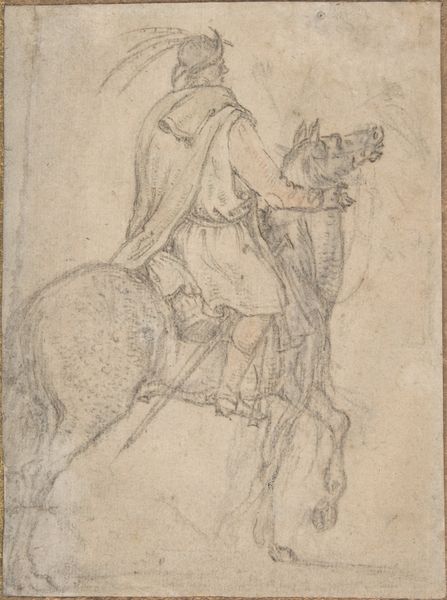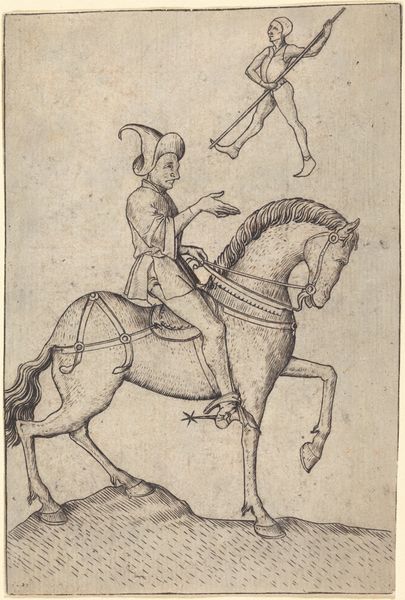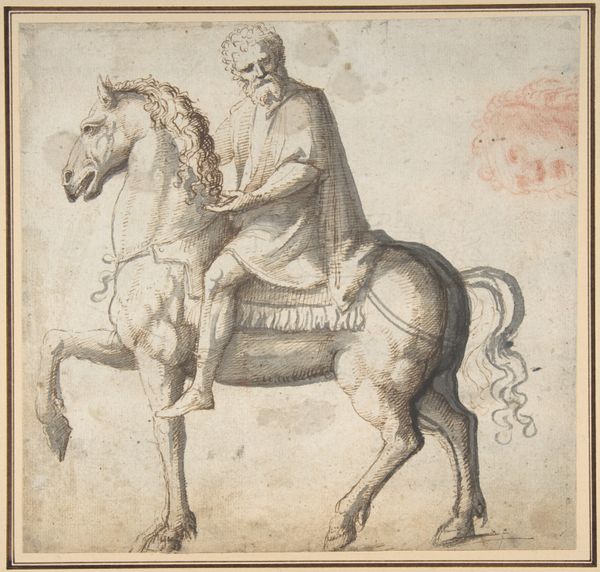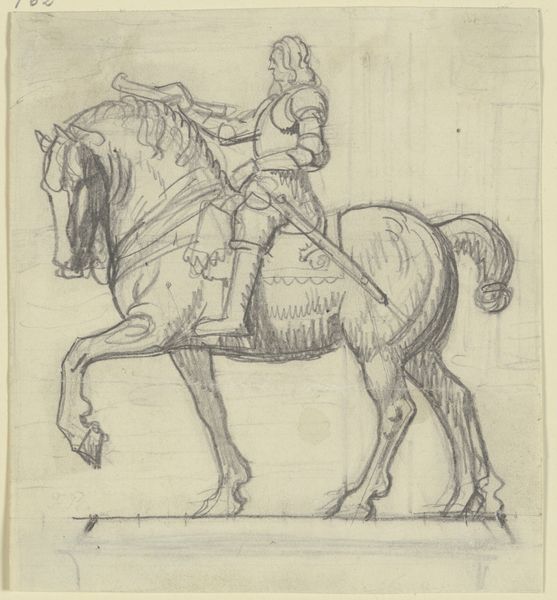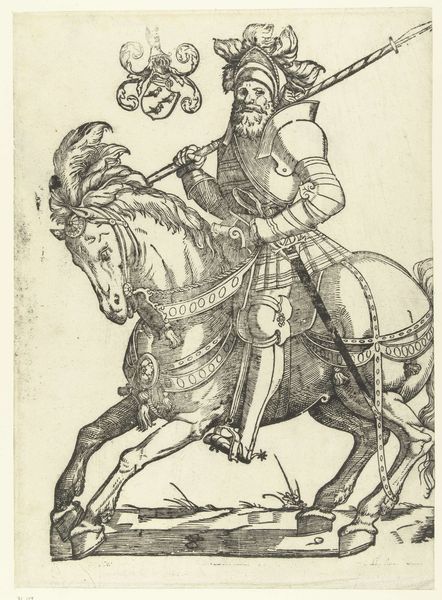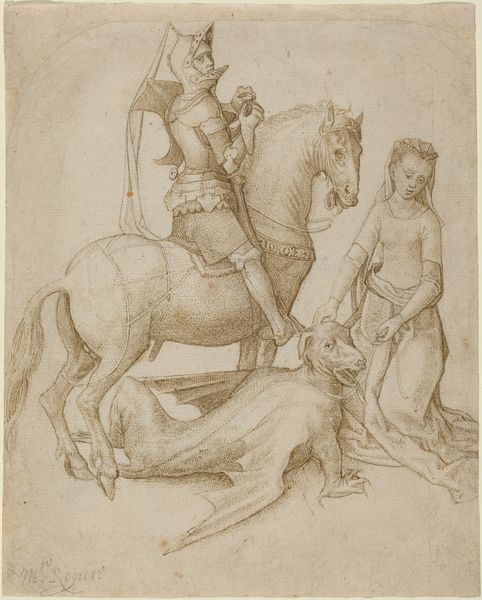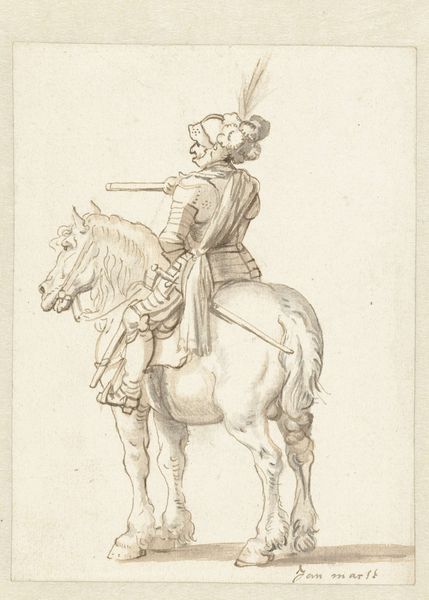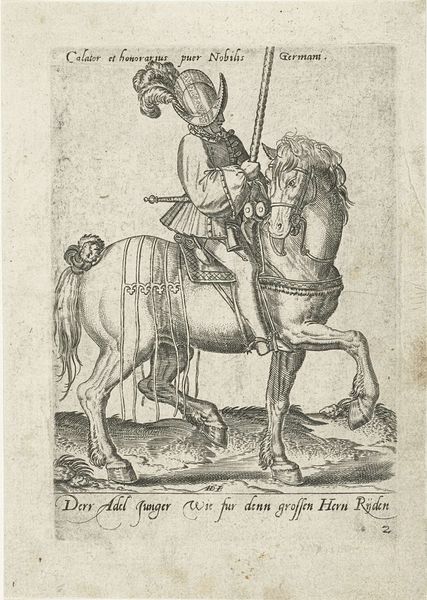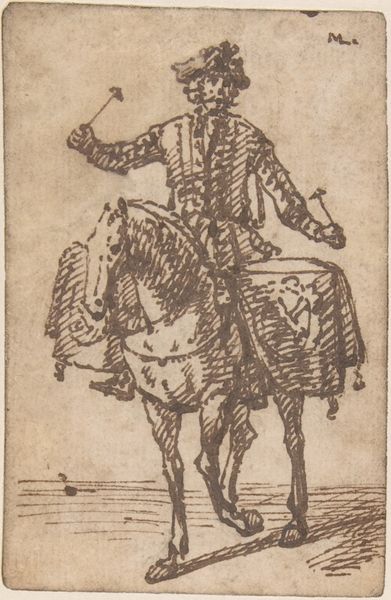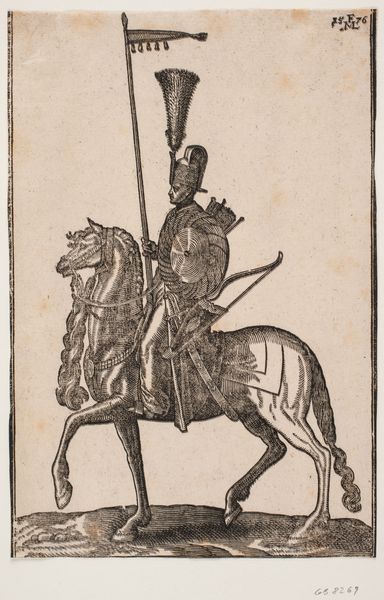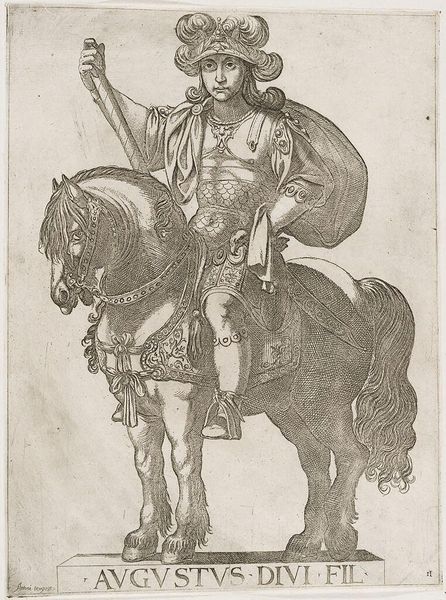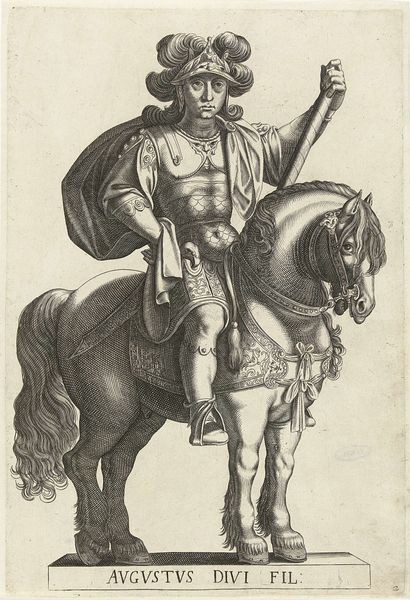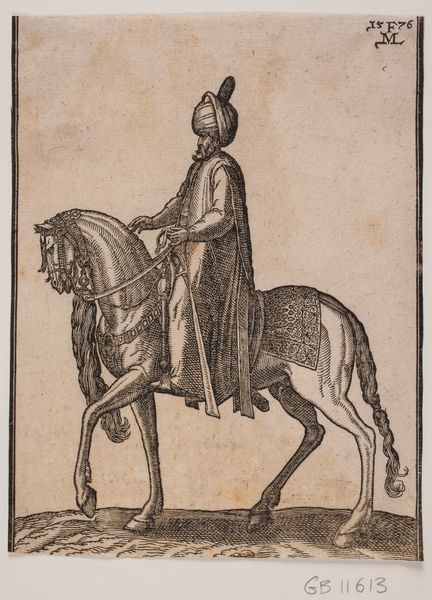
drawing, carving, paper, pencil
#
portrait
#
drawing
#
medieval
#
carving
#
landscape
#
figuration
#
paper
#
pencil
#
horse
#
men
#
history-painting
#
italian-renaissance
#
sword
Dimensions: 7 x 4 1/2 in. (17.8 x 11.4 cm) maximum; borders cropped irregularly
Copyright: Public Domain
Editor: This is "Saint Martin and the Beggar," a pencil drawing on paper by Vittore Carpaccio, dating roughly from 1493 to 1500. The composition, even in this preliminary sketch, strikes me with its stark contrast between the mounted, regal figure and the vulnerability of the beggar. What structural elements stand out to you? Curator: The most compelling aspect of this work resides in its dynamism and stark linearity. Observe how Carpaccio employed subtle hatching to render three-dimensionality, yet maintains a prevailing emphasis on the line as the delineator of form. Note also the strategic deployment of negative space to accentuate the figures’ volume and dramatic tension. Consider how the positioning of the figures – Saint Martin elevated, the beggar imploring – reinforces the narrative’s moral imperative. Editor: I see the emphasis on line you are describing, almost as though the figures were carved, yet still they look dynamic! Is there anything else that might inform our reading of the work’s formal organization? Curator: Indeed, let us not neglect the equestrian element. Note how the horse’s stance - one leg lifted - serves as an additional structural device, a dynamic counterpoint to the relatively static posture of Saint Martin. In many respects, this detail enlivens what might otherwise be a predictable composition, introducing an element of anticipatory motion. Notice the balance that Carpaccio achieves. It seems precariously poised on the brink of transformation. Editor: So, we’re seeing that the visual organization through form and line conveys meaning itself, beyond just the subject matter. It’s the tension and implied movement that create dynamism. Curator: Precisely! Carpaccio, through his formal choices, invites us into a meditation on the moral act. Through semiotic analysis we read it, but it’s first formally organized to evoke those sentiments in the first place. Editor: This focus on the formal and structural elements gives me a completely new way to appreciate this piece, and how artists use these aspects to evoke emotion. Curator: Indeed! Hopefully you appreciate the complex arrangement and how they tie into meaning making beyond narrative depictions.
Comments
No comments
Be the first to comment and join the conversation on the ultimate creative platform.
